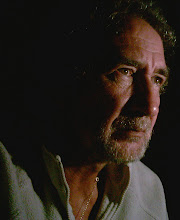I'm betting that a few overweight Christians are checking out the price of chocolate eggs, and that there's even a tiny dissenting voice in the Pope's head saying "I'd rather stay in bed."
My bet is also that somewhere, hidden in a locked vault, is proof of the true meaning of Easter (Eostre, goddess of dawn), the prehistoric astrological design that gave us the original epic symbolic narrative that today we all call the Passion of Christ.
It's a great story, but then again so is Gilgamesh and The Argonautica, so is the Illiad and the Battle of Thermopylae - all four of which are taken from the same graphic layout as the Christian story, and will no doubt prove to be extremely lucrative as the collection plate passes along the unquestioning minds of the misguided congregation.
I'm betting that some people who began to read this blog will now cease and move on - but I'm hoping that just a few will remain to seek further information - because knowledge is power.
Here's a list of my Good Friday bets, and the "Crucifixion" image from 10,000 years ago.
A - I'm betting that the Christ figure is truly a personification of the front of the centaur, the human hero figure of the cosmos - and that the alignment of Vega (the point of the arrow) and the rising Sun falling on December 25th is not purely coincidental. I'm also betting that St. John the Baptist is a personification of the rear of the centaur, covered in hair, linked by blood, standing in water, bending down in subservient pose before his true master.
B - I'm betting that the wooden cross actually refers to the bow and arrow carried by the centaur, and ...
C - I'm betting that the nails through the hands section is allegory of the overlapping wing of the dragon and the end of the bow.
D - I'm betting that Calvary, the green hill on which the cross was placed, refers to the tail section of the dragon, and also ...

E - I'm betting that the city wall is actually the ecliptic circle, the path of the sun. This particular symbolism was also used 3000 years earlier in the epic of Gilgamesh.
F - I'm betting that the gash to the torso actually refers to the rectum of the dragon (those prehistoric artists were nothing if not thorough).
G & H - I'm betting that the thieves on either side of the cross refers to the two vultures facing each other - this symbolism was also used by the Greeks, because vultures equal thieves, equals thieving vultures. It was used before in The Argonautica and also as the Stymphalian birds in the labours of Hercules. The gospels are not that original.
I - I'm betting that the crown of thorns refers to the crocodilian form of the dragon's head, complete with sharp teeth, thorns.
J - I'm betting that the sign placed on the cross refers to the flame of the dragon, and finally ...
K - I'm betting that the thunderclouds that gathered at his eventual demise refers to the fireballs and smoke from this ancient cruciform beast.
No, I won't be going to church this year.

No comments:
Post a Comment